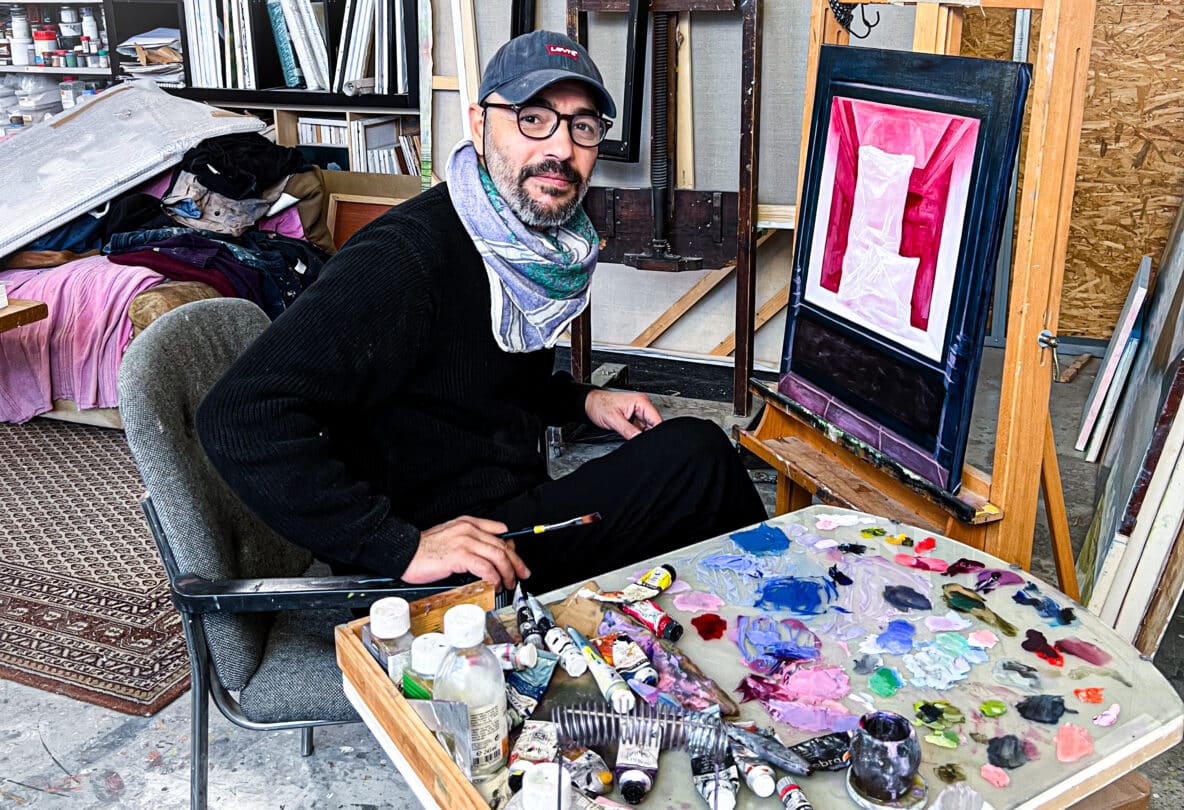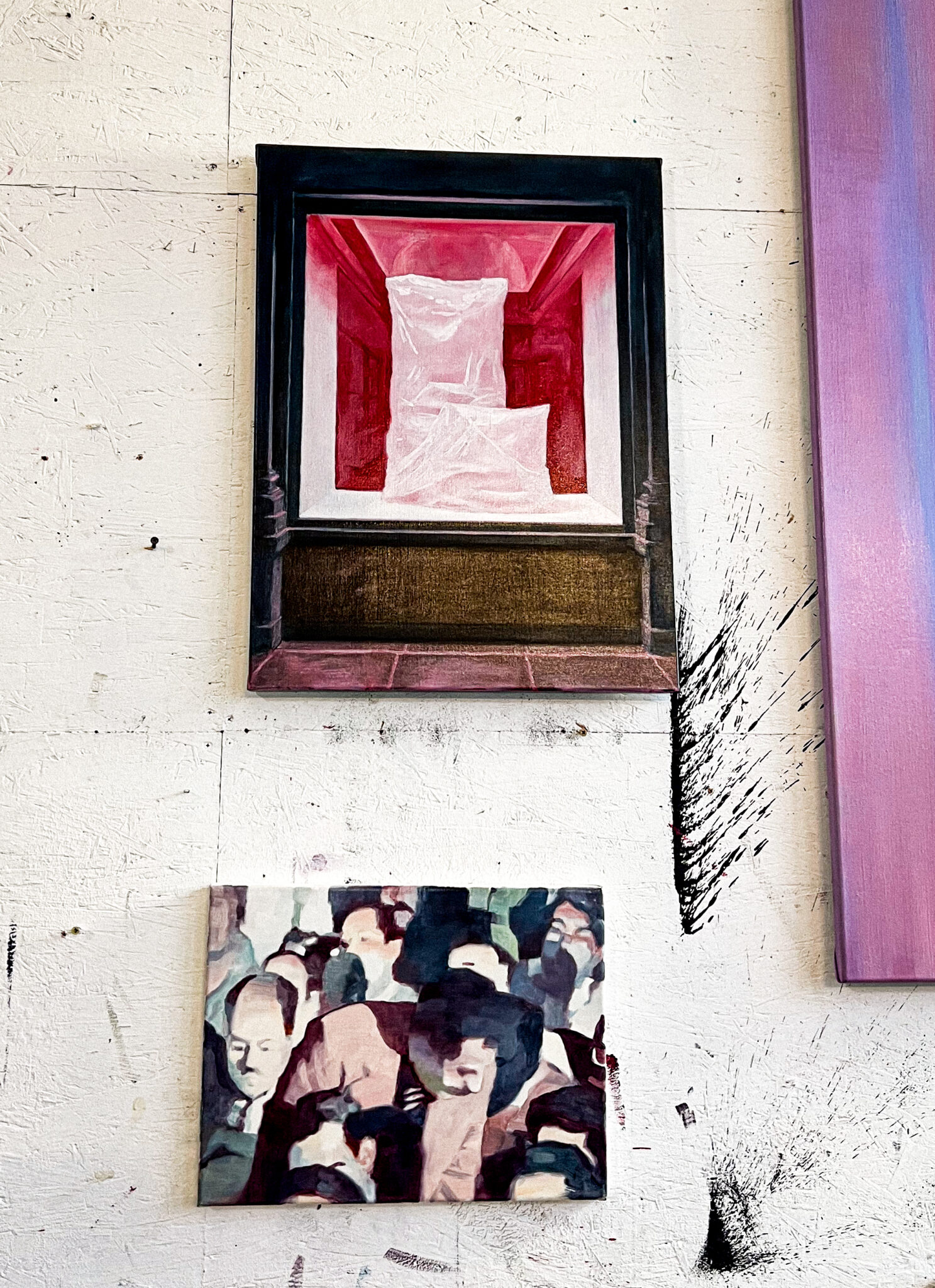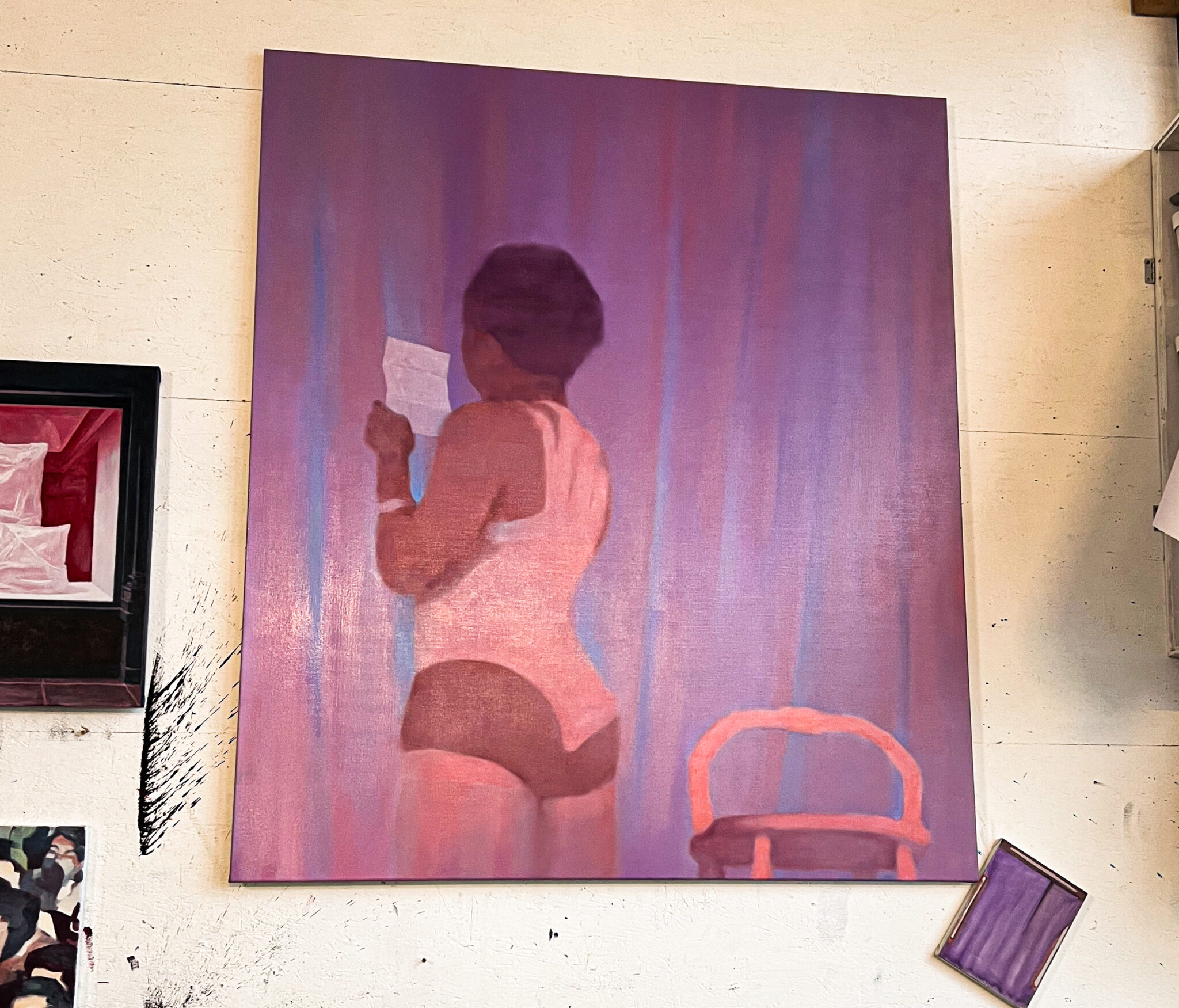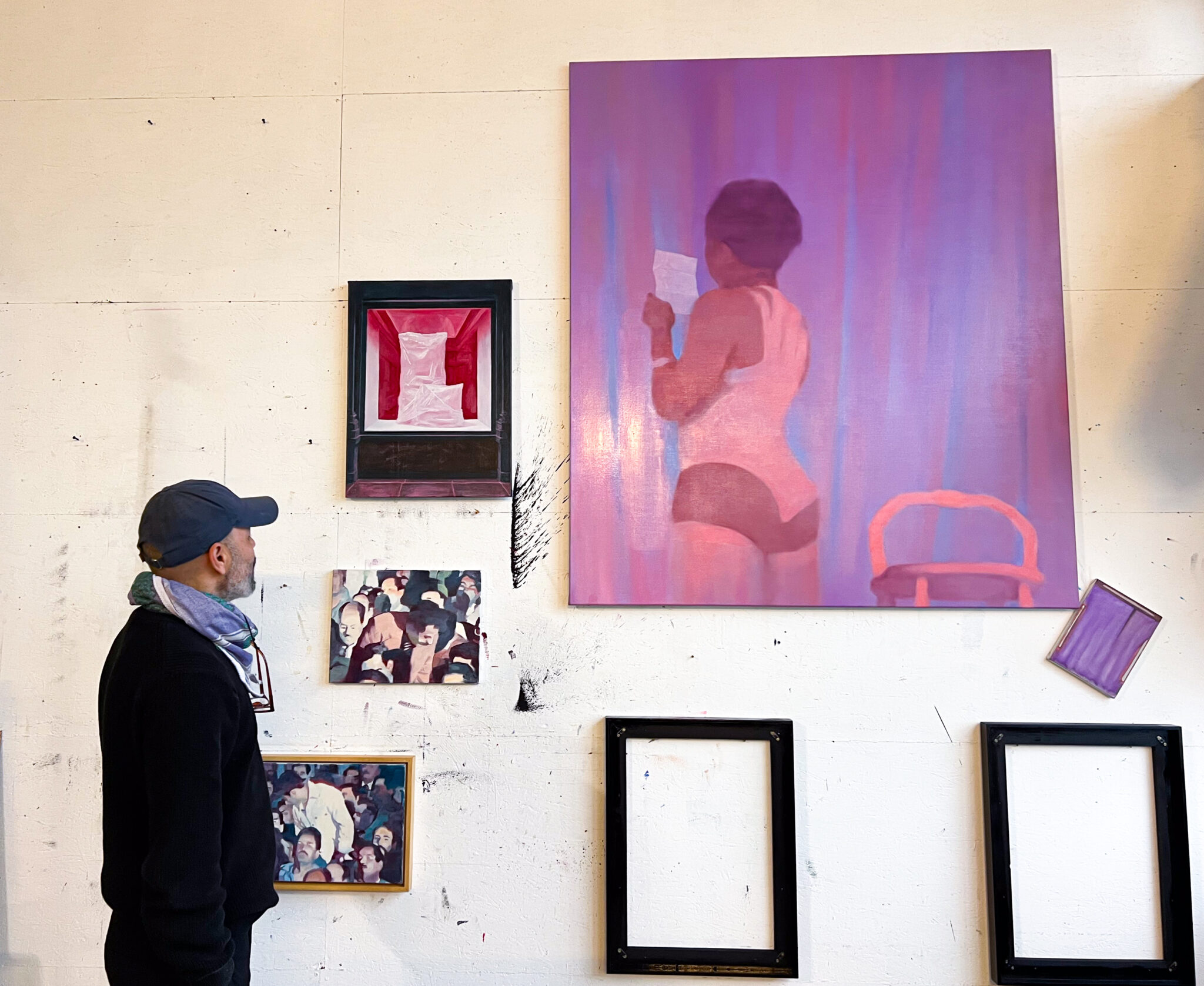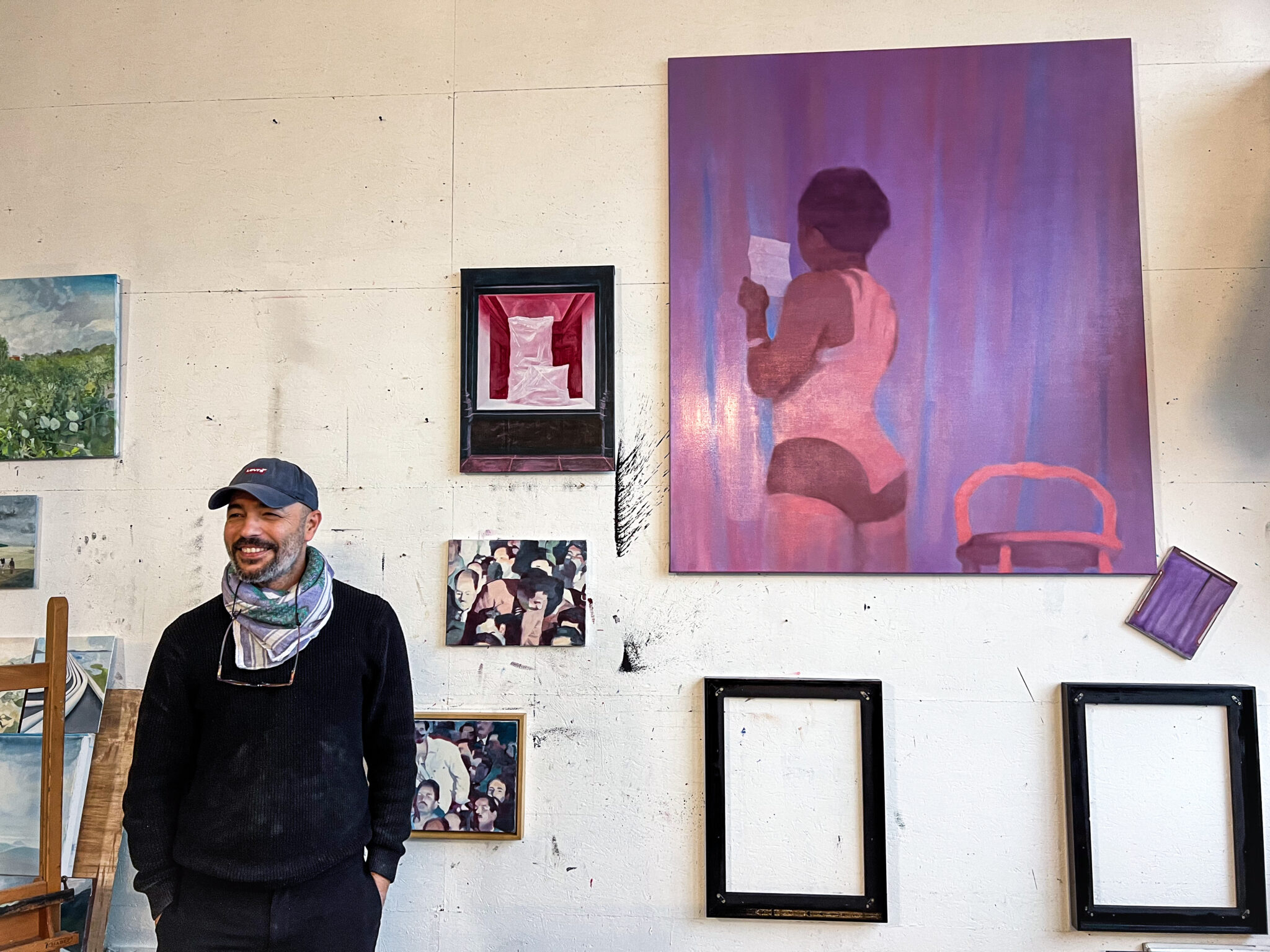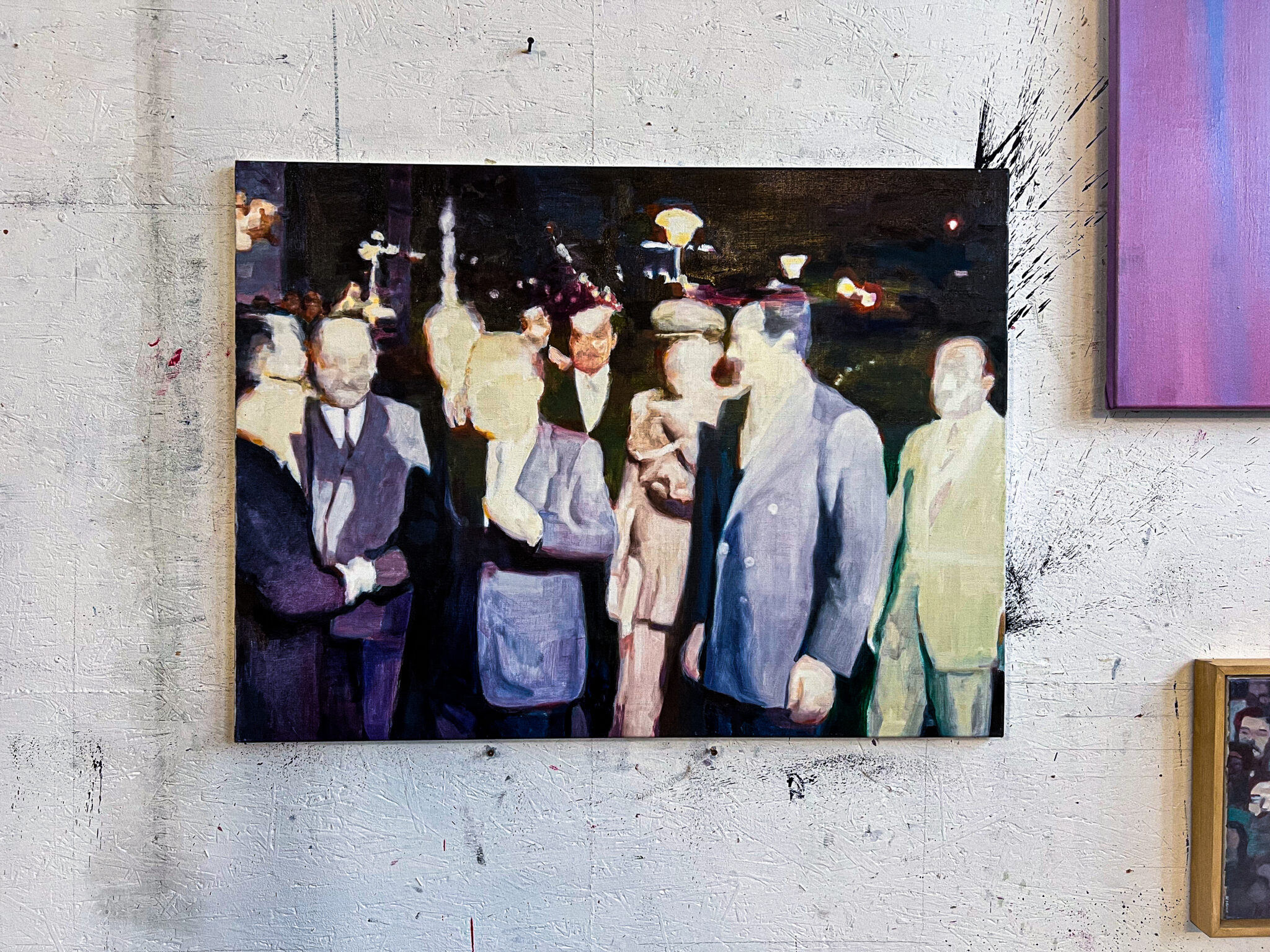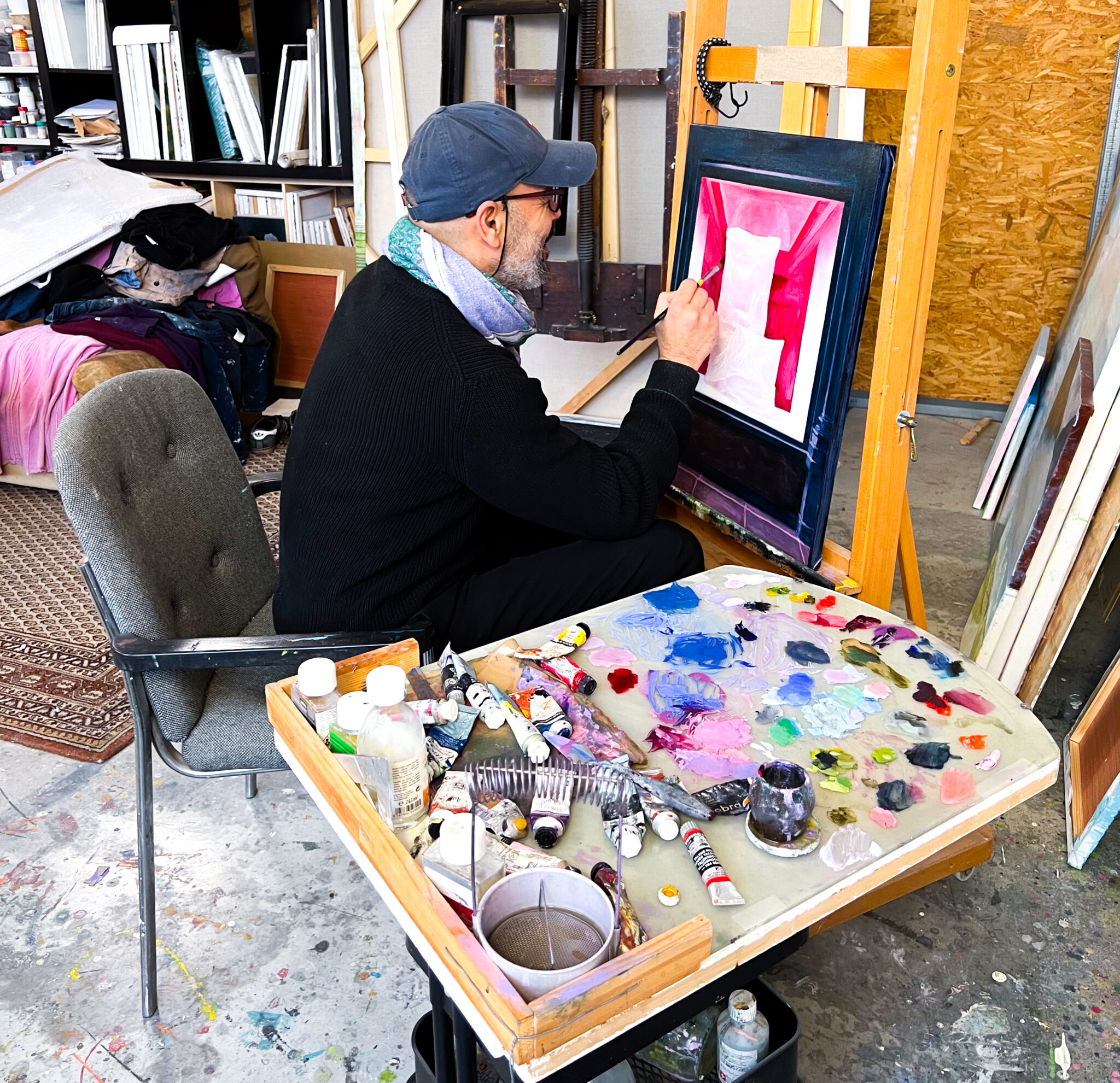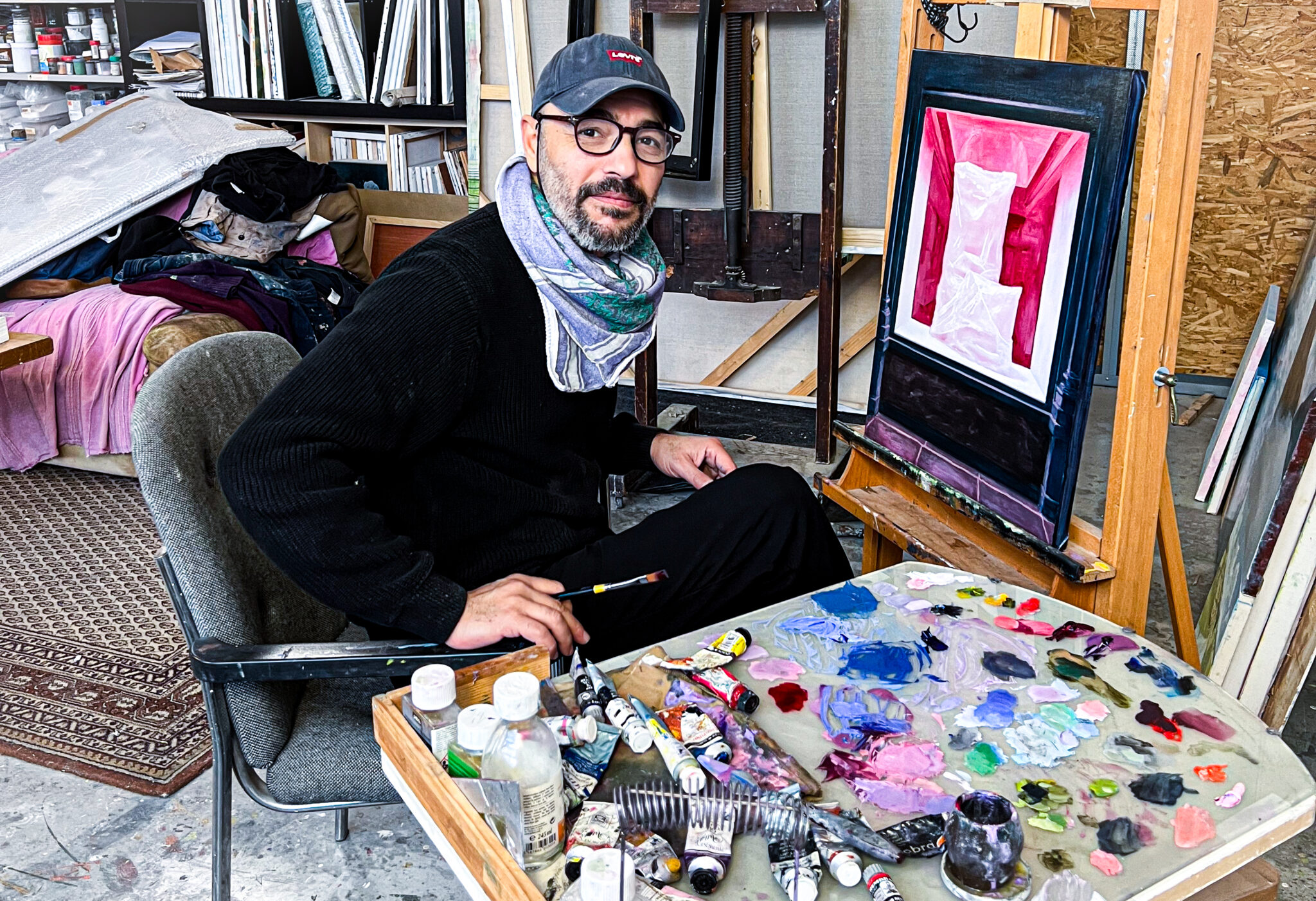Hamdan Saray, a 49-year-old Iraqi painter born in Baghdad, fled his homeland in 2003 after the American invasion of Iraq. He transformed the trauma of surviving three wars into a powerful artistic journey. Saray, who currently resides in Belgium, explores themes such as memory, identity, and healing via his paintings as a way to cope with the suffering caused by displacement and conflict. He exhibits his artwork between Brussels and Baghdad.
Discovering Art as a Child
“I have always loved painting and drawing since childhood. I would often sketch my teachers and friends, who loved my work. I was fascinated by biographies of European and American artists, such as Mark Rothko and Luc Tuymans and found myself inspired by their lives and the ways they lived.”
“Later, I attended the College of Fine Arts at the University of Baghdad and graduated in 2003, but life always has other plans. As the American invasion of Iraq began, I moved to Belgium after a friend encouraged me to leave. I left, uncertain of where to go or what was waiting for me.”
Starting Over in Belgium
“The experience of moving to Belgium was overwhelming. Everything felt strange and different: the language, the culture, the lifestyle. I had left behind a devastated city whose scars still showed on every street. My generation was often called the generation of wars because we had never known peace. Starting all over again in a foreign land, with no one to share my experiences, was so difficult.”
“Along with that, the art world here in Belgium was quite different from what I had known. I felt lost and disoriented. It felt almost like learning an alien language with new techniques, styles, and viewpoints. To integrate into this new society, I immersed myself in Belgian life, exploring its artistic traditions. This exploration became crucial for my artistic development.”
Using Art to Process Trauma
“Art is more than just painting, it’s a way of expressing what words can’t. I wanted to depict the lasting images of war and the propaganda that once dominated my homeland. I paint from my memories because I believe they shape the way we see the world.”
“Before I start a new piece, I watch clips from Lest We Forget, a TV show that features clips and images of the war in Iraq. I pick moments that speak to me and use them as inspiration. Translating those memories into paintings helps me process their weight. It’s my way of expressing my ideas and emotions and everything I’ve been through.”
“Many of my friends say that my paintings are too sad, dramatic, and heavy. But art is my tool of expression. As I always say, I am a son of war. I was only five years old when the war with Iran began. Then came the Gulf War, and then more conflicts after that. These experiences shaped me, and I have to talk about them through my art.”
Returning to Painting as a Form of Healing
“There was a time when I stopped painting. There was too much bad news flowing to distract me from concern about my family back home. Finally, I figured out that not painting just made things worse.”
“Returning to art became a watershed moment in my life, allowing me to process grief, fear, and uncertainty. I can honestly say that art has been my greatest tool for healing.”
Art cannot always be joyful and colourful; it’s also a way of showing the horror in this world.”
Hamdan Saray
I want people to understand that art isn’t just about bright colours and happy images. It’s also about pain, struggle, and truth. Each painting tells a story, and I hope people take the time to really contemplate each piece. Some paintings are bold and attractive, catching attention very fast, and some are shy and quiet. Just like people—you need to take the
[jetpack-related-posts]
